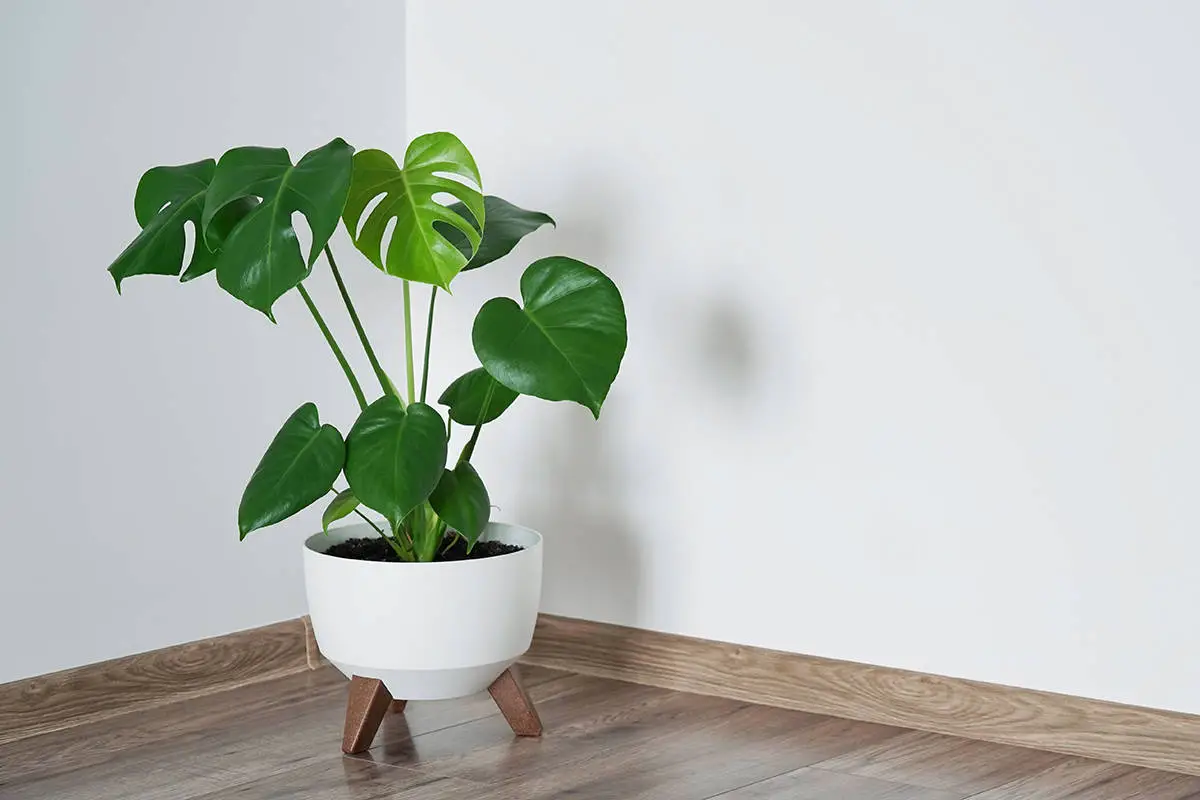Are you looking to add a statement piece to your home decor? A Monstera might just be the perfect fit. Known for its dramatic, hole-punched leaves, this plant brings a bit of the jungle indoors. In this post, you’ll learn exactly how to keep your Monstera thriving, making sure it continues to turn heads and elevate your living space.
| Common Name | Monstera, Swiss Cheese Plant |
| Botanical Name | Monstera deliciosa |
| Family | Araceae |
| History & Origin | Native to tropical forests of Central America |
| Plant Type | Evergreen tropical perennial |
| Mature Size | Up to 10 feet tall indoors |
| Sun Exposure | Bright, indirect light or partial shade |
| Soil Type | Peat-based, well-draining potting mix |
| Soil pH | Slightly acidic |
| Temperature | Prefers 65-85°F (18-30°C) |
| Watering | Water when top inch of soil is dry |
| Fertilizing | Feed monthly during spring and summer |
| Bloom Time | Rarely blooms indoors |
| Flower Color | Creamy-white (rare in indoor settings) |
| Hardiness Zone | 10-12 (outdoors) |
| Toxicity | Toxic to pets and humans if ingested |
| Common Problems | Root rot, spider mites, leaf spots |
Table of Contents
Light
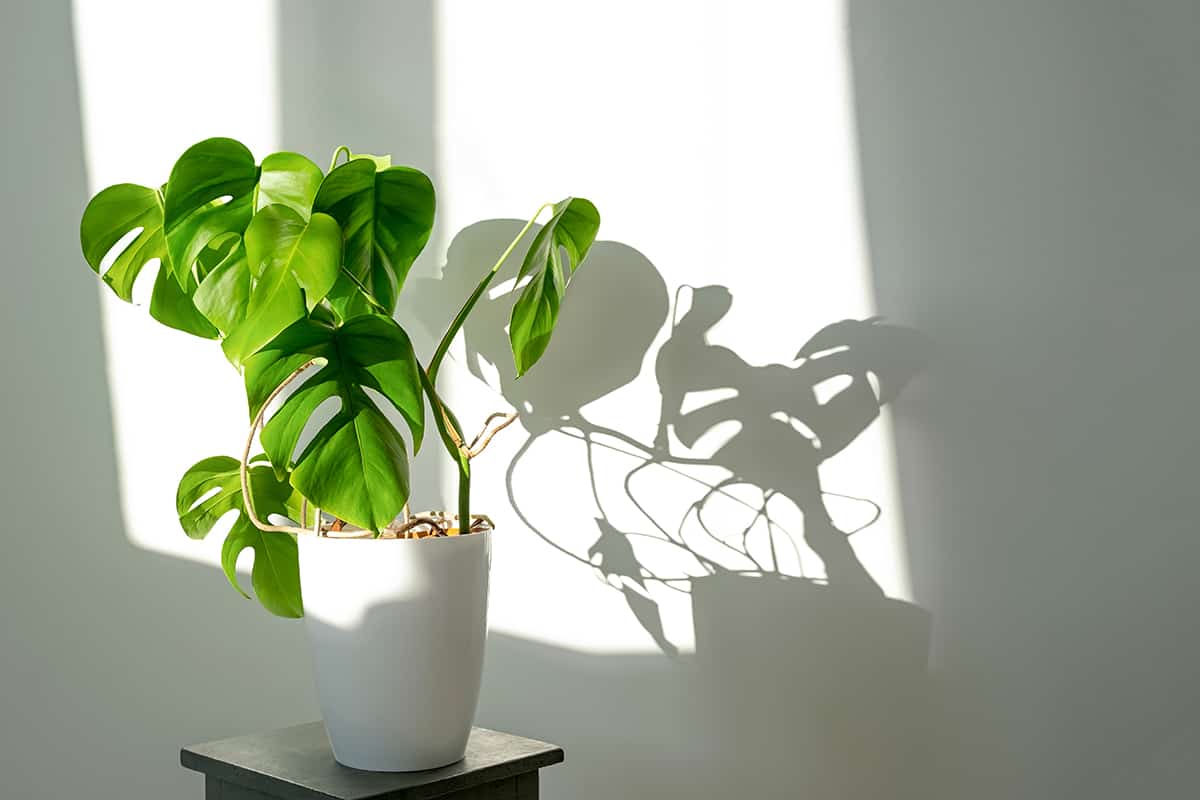
Monstera plants typically grow best in medium-light locations, which means providing your plant with filtered sunlight. Direct intense sunlight may cause leaf scorching; therefore, it is not recommended.
Ensure you place your Monstera in a spot where it can receive bright, indirect light to promote its optimal growth. Ideally, placing the plant near a window with sheer curtains or behind a taller plant can help achieve the desired light conditions. Keep in mind that the light intensity usually decreases as you move further away from the window.
You can perform a shadow test to determine the light intensity in your space. In the area where you plan to place the Monstera, hold your hand about 12 inches above the surface during peak sunlight hours. A sharp, well-defined shadow indicates strong light, while a softer, blurred shadow suggests more suitable medium-light conditions.
Soil
Monstera plants prefer a well-draining soil mixture to prevent root rot. A blend of peat, perlite, and vermiculite works well for retaining moisture while offering drainage.
When planting your Monstera, you should inspect the soil quality. For areas with sandy soil, it’s essential to follow the recommendations for planting in such conditions. Mixing organic matter such as compost into the sandy soil helps to improve its structure, promoting the growth of your Monstera vine.
Additionally, balancing the pH level of your soil is crucial for the growth and development of your Monstera plant. A slightly acidic pH level between 5.5 and 7.0 provides the ideal environment for the vine to thrive. You can use a soil pH test kit to determine the pH level and make necessary amendments to achieve the desired range.
Water
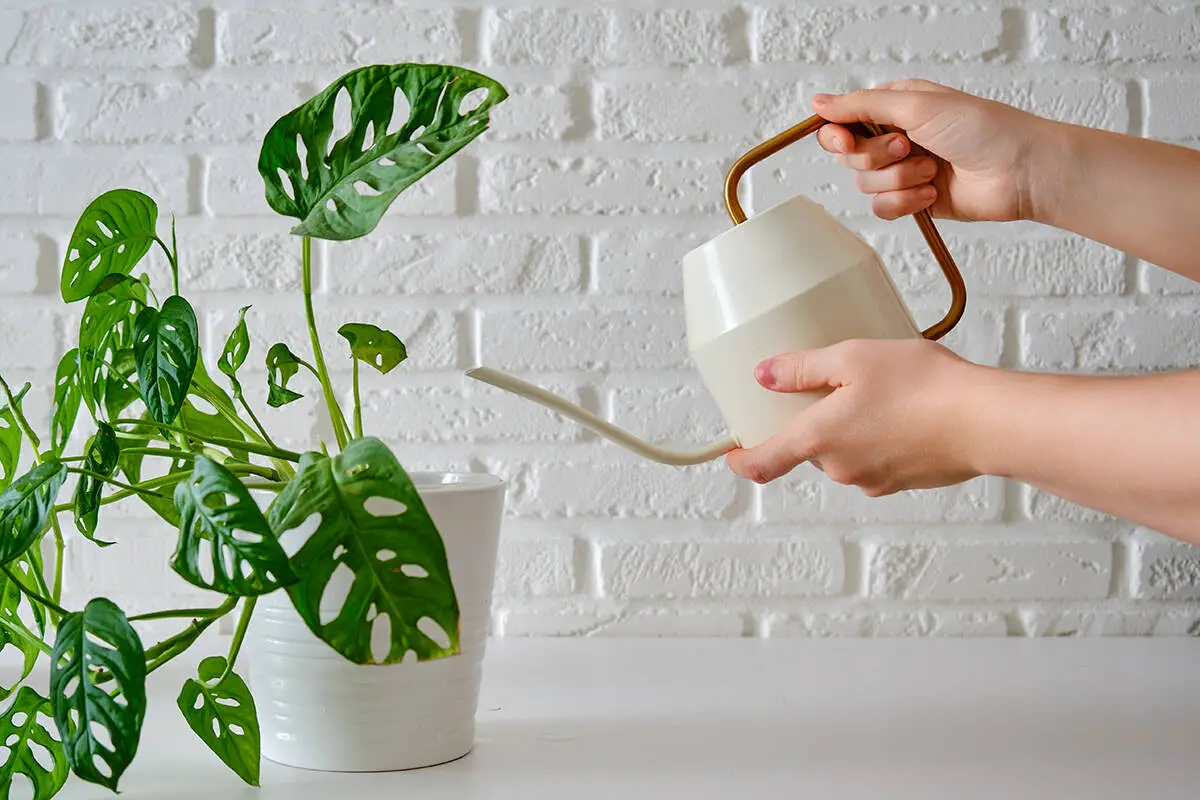
It’s crucial to keep the soil consistently moist, but not soggy. Overwatering can cause root rot and ultimately harm your plant. To maintain the right level of moisture, you should water your Monstera plant once a week, allowing the top inch of soil to dry out between waterings.
Make sure to use well-draining potting mix for your Monstera plant to prevent waterlogged soil. A mix containing perlite or bark can help improve drainage and keep your plant happy. Also, ensure that the pot you choose has drainage holes at the bottom.
Another important aspect of watering your Monstera plant is the water quality. Chlorine and fluoride present in tap water can cause browning of the leaves. Use filtered, distilled, or rainwater for the best results. Don’t hesitate to occasionally give the plant’s leaves a gentle wipe with a damp cloth, as dust can hinder its productivity and inhibit growth.
Keep an eye on the plant’s appearance, as this can signal whether your watering schedule is sufficient. Yellow or browning leaves usually indicate overwatering, while drooping or curling leaves suggest your Monstera needs more water. Adjust your watering routine accordingly to keep your Monstera plant happy and healthy.
Temperature and Humidity
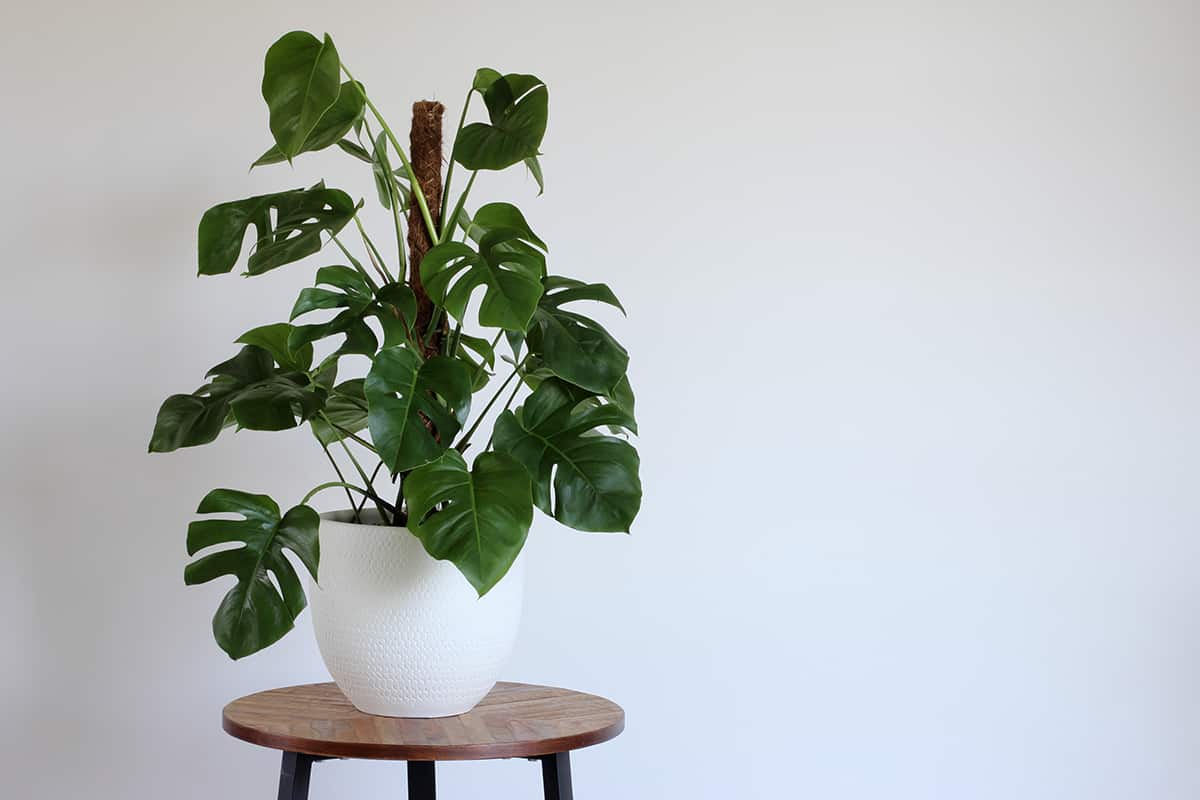
Monstera plants thrive in average warm temperatures ranging from 60 to 85 degrees Fahrenheit. Young plants require higher temperatures for optimal growth, gradually decreasing as the plant matures.
The plant prefers medium to high humidity levels, similar to its natural tropical habitat. If you struggle to maintain humidity in your home, consider using a humidifier or placing a tray of water near the plant to boost the moisture levels in the air.
Fertilizer
Monstera plants don’t need a high amount of fertilizers. Begin by applying 1/4 lb (113 g) of a complete dry fertilizer mix, with 20 to 30% nitrogen from slow-release sources as new growth starts.
It’s essential to maintain good fertilization practices for better plant health. For example, using a liquid fertilizer, such as 10-10-10 with minor elements, can be effective. If your plant is growing in osmunda fern fibers, fertilize once every 6 weeks, while those growing in fir bark are better suited with 30-10-10 instead.
Bear in mind that Monstera can become a massive plant in its native environment, so regular fertilization is key to managing its growth. However, be careful not to over-fertilize. If the leaves start to yellow or show signs of burning, consider reducing the fertilizer application rate. In this way, you can nourish your Monstera plant, fostering vibrant foliage and healthy growth.
Propagation
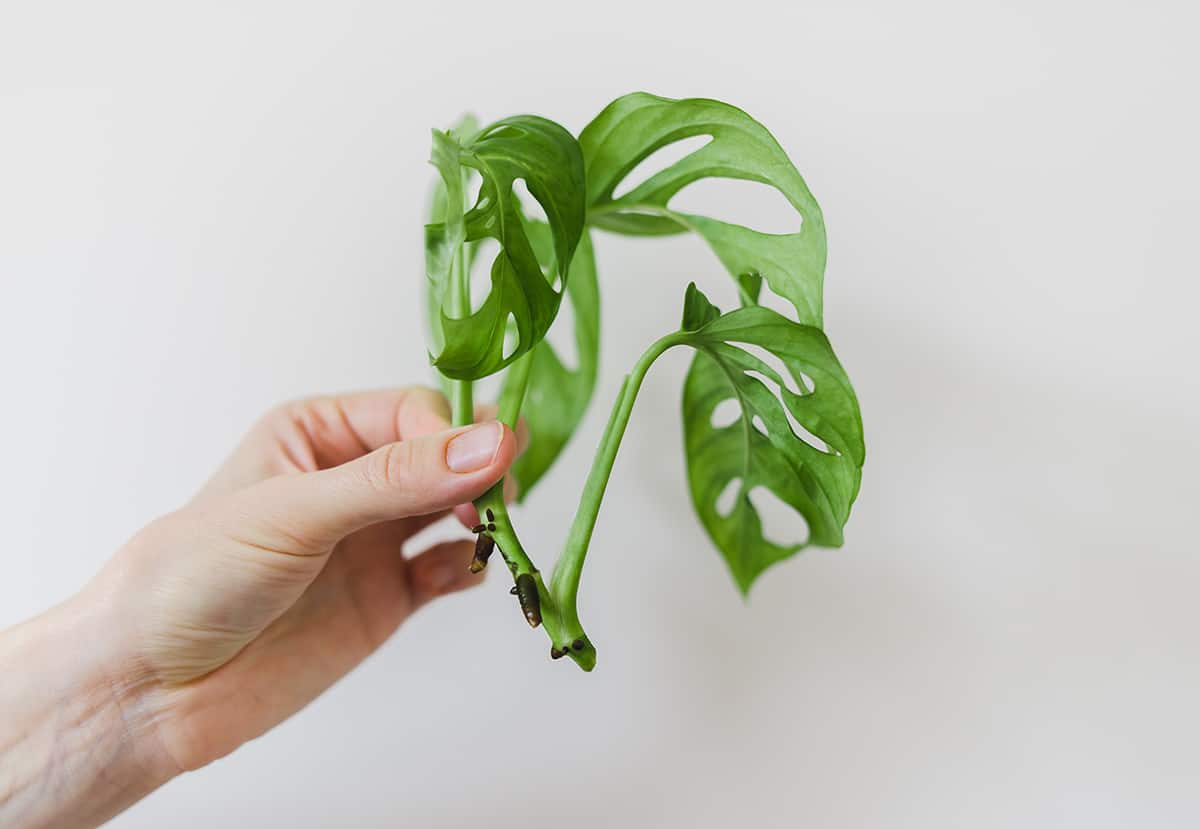
To propagate your Monstera deliciosa, you should choose a healthy stem with a well-developed leaf and an aerial root. The UMN Extension suggests using a sharp, clean knife or scissors to make the cut just below the aerial root.
Once you have your cutting, place it in a container filled with water. Make sure the aerial root is submerged, and keep the container in a warm, well-lit area. Change the water weekly to maintain its freshness. In about two to four weeks, you’ll notice new roots growing from the submerged part.
When the roots have grown to a few inches in length, it’s time to plant your Monstera cutting. Prepare a potting mix rich in organic matter, and fill a container with drainage holes. Plant the cutting with the rooted part in the soil, making sure the roots are well-covered.
Pruning
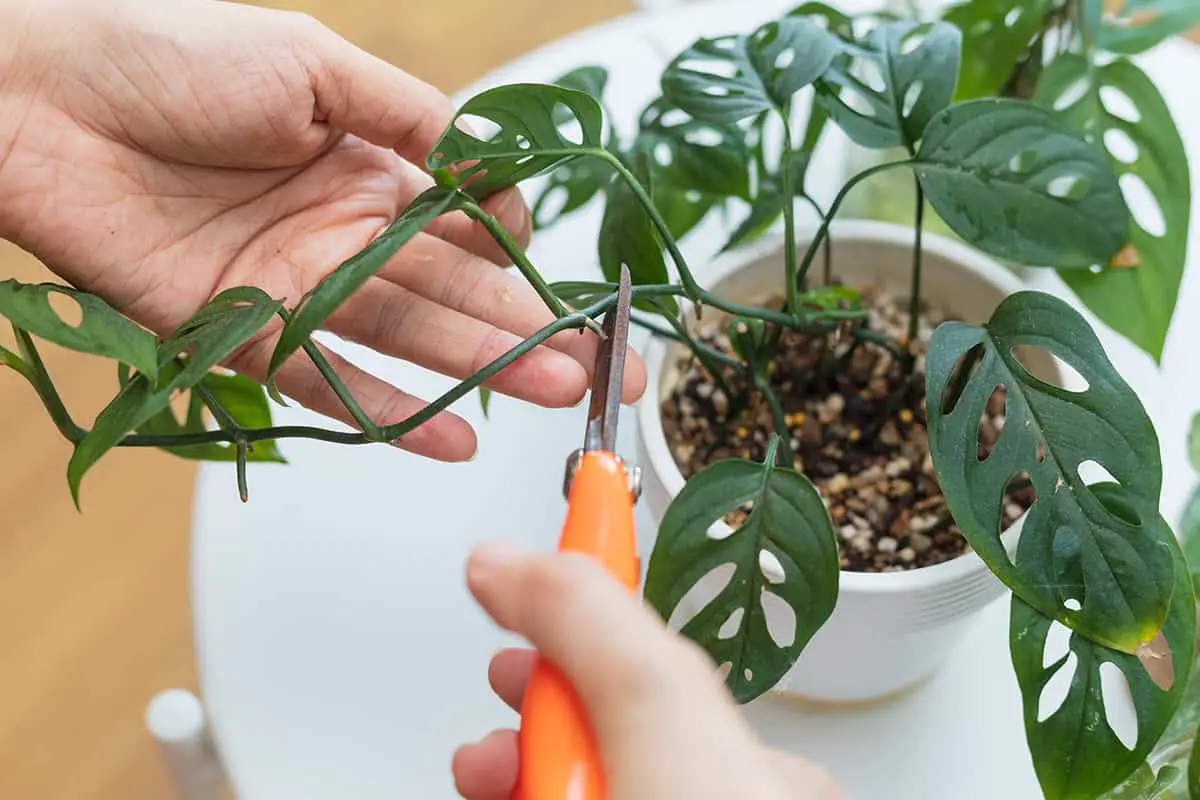
It’s important to remove damaged or brown leaves as they can diminish your plant’s vigor and beauty.
To begin, make sure you have a clean, sharp pair of pruning shears or scissors. While pruning, keep an eye out for aerial roots, which are natural growths that support the plant’s sprawling vines. Aerial roots can be trimmed and planted directly in the soil to propagate new Monsteras.
If the plant is getting too large, don’t hesitate to remove unwanted vines. Shortening them can encourage the growth of new healthy leaves. Be cautious not to over-prune your Monstera, as excessive trimming may weaken the plant.
Remember that your Monstera plant is a robust species that can recover from pruning mistakes. On the other hand, occasional pruning can prevent your Monstera from getting too unruly.
Potting and Repotting
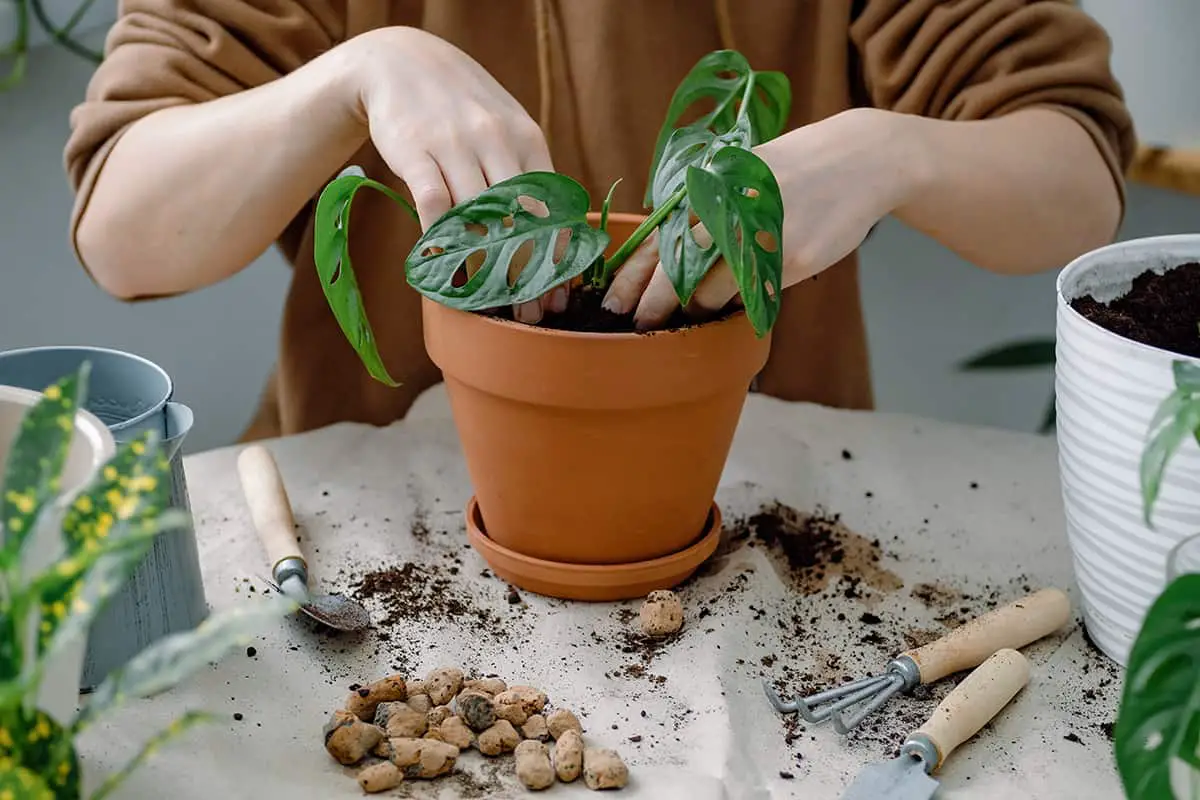
Before potting your Monstera deliciosa, choose an appropriate container. The pot must have drainage holes to prevent over-watering. When repotting, select a new pot that’s 2 inches larger in diameter than the current one.
To pot a new Monstera, use a mixture of potting soil and perlite. Perlite is crucial as it promotes good drainage. The soil should be kept moist but not overly wet, to avoid disease. Place a shard over the drainage hole before adding soil, to avoid soil leakage. Add enough mix to the pot to bring the root ball an inch or two below the rim, leaving space for watering.
For repotting, follow the same process but remove the old soil first. Gently loosen the root ball and clean off excess soil. Inspect the roots for decay or damage and trim if needed. Place the plant in the new pot and fill it with the potting mix, providing support for the roots and leaving space for water.
Common Problems & Troubleshooting
As you grow your Monstera, you might encounter some issues. One of the primary concerns is Contact Dermatitis, which causes irritation to your skin. To avoid this, always wear gloves when handling your plant.
Another issue you may face is pests. Common pests include mealybugs, spider mites, and scale insects. To combat these pests, you can use a mixture of soap and water or horticultural oil to spray on your plant’s leaves.
Monstera plants are also prone to root rot. You can prevent this by ensuring proper drainage and not overwatering your plant. Make sure to check the soil for dampness before watering. A well-draining soil mix will help keep your plant healthy.
Yellowing leaves can indicate several problems, such as nutrient deficiencies or too much sunlight. You can fix this by moving your Monstera to a shadier spot and adjusting its feeding schedule. In some cases, you might need to increase the humidity around your plant, as Monstera thrives in moist environments.
Monstera Varieties
Monstera Deliciosa
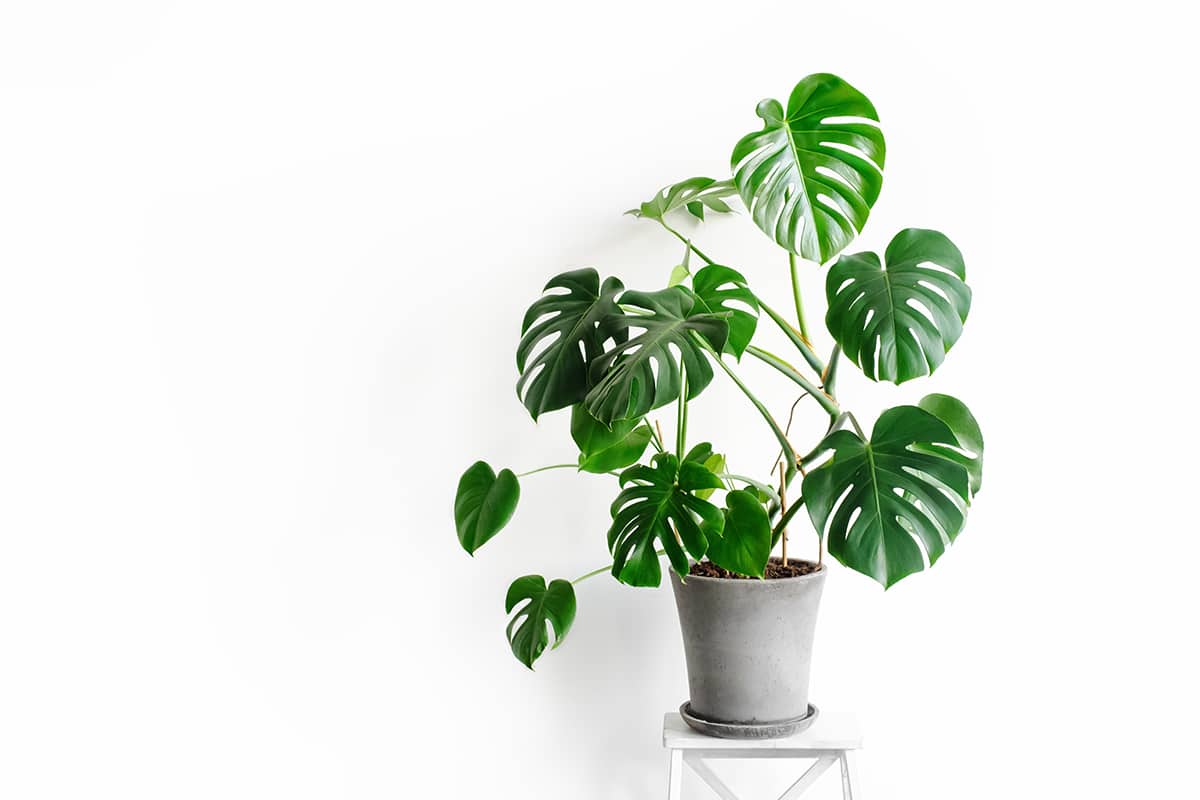
Monstera deliciosa, also known as the Swiss cheese plant, is a popular houseplant. This variety has large, dark green leaves with distinctive splits and holes. It is native to the rainforests of Central America and can be grown indoors or outdoors in warmer climates.
Monstera Adansonii

The Monstera adansonii, often referred to as the Swiss cheese vine, has smaller leaves than the deliciosa. Its leaves have more numerous fenestrations contrasting with its rich green color. It is a great choice for hanging baskets or climbing on a support.
Monstera ‘Thai Constellation’
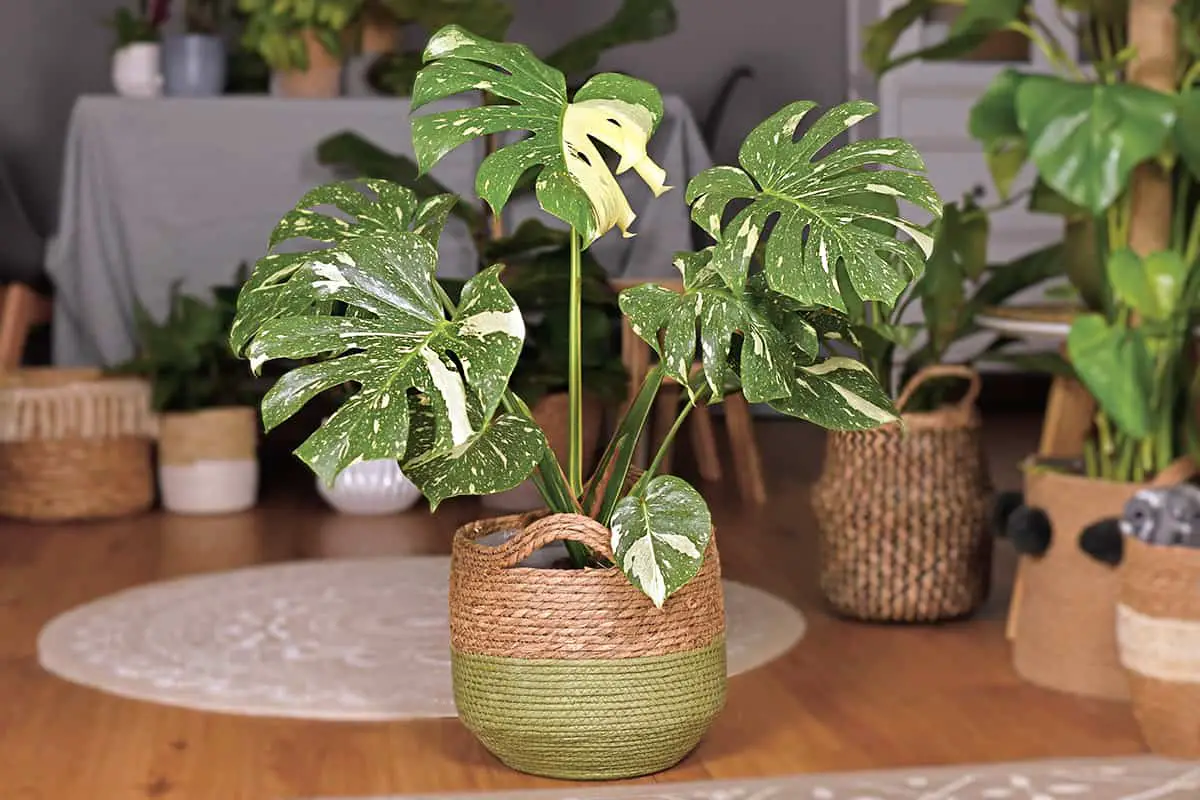
Monstera ‘Thai Constellation’ is a cultivar with variegated leaves featuring creamy-white patterns. This slow-growing variety is a highly sought-after houseplant due to its stunning appearance.
Monstera Obliqua
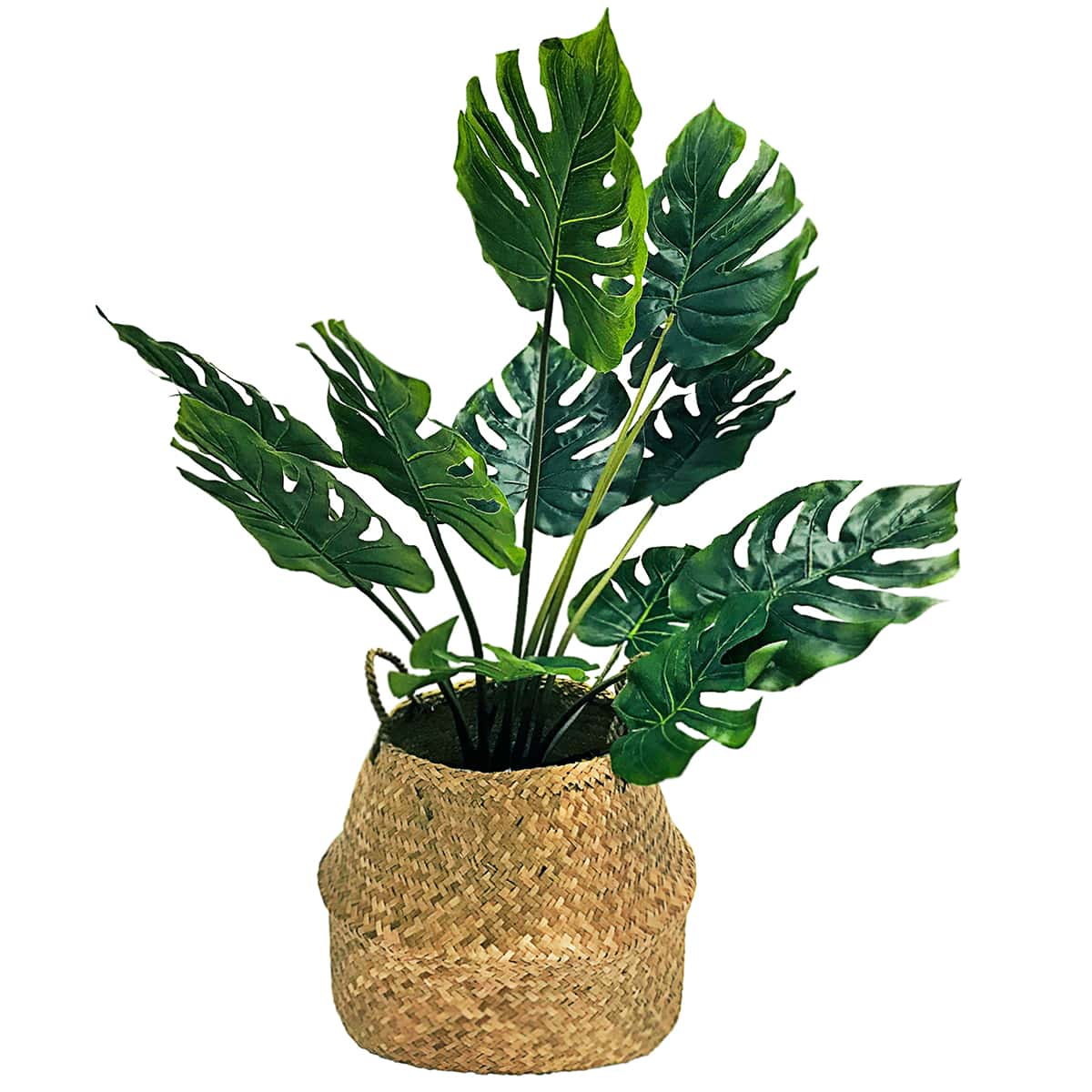
Monstera obliqua is a rarer variety, characterized by its extremely fenestrated leaves. It is often confused with Monstera adansonii but has even more delicate, paper-thin leaves.
Monstera Siltepecana
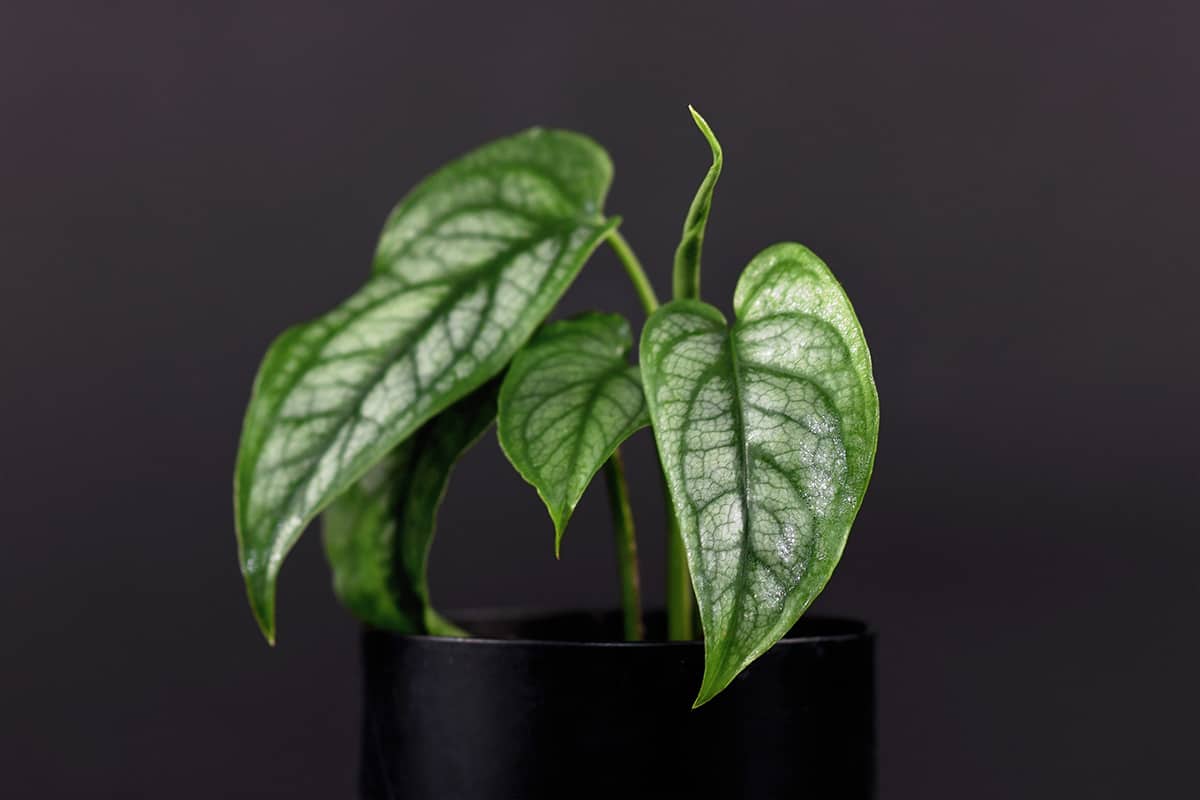
This monstera variety is known for its silver-green leaves, which become more lobed and fenestrated as the plant matures. Monstera siltepecana is a fast-growing climber that can be grown on a stake or trellis, or as a trailing plant in a hanging basket.
Monstera Borsigiana
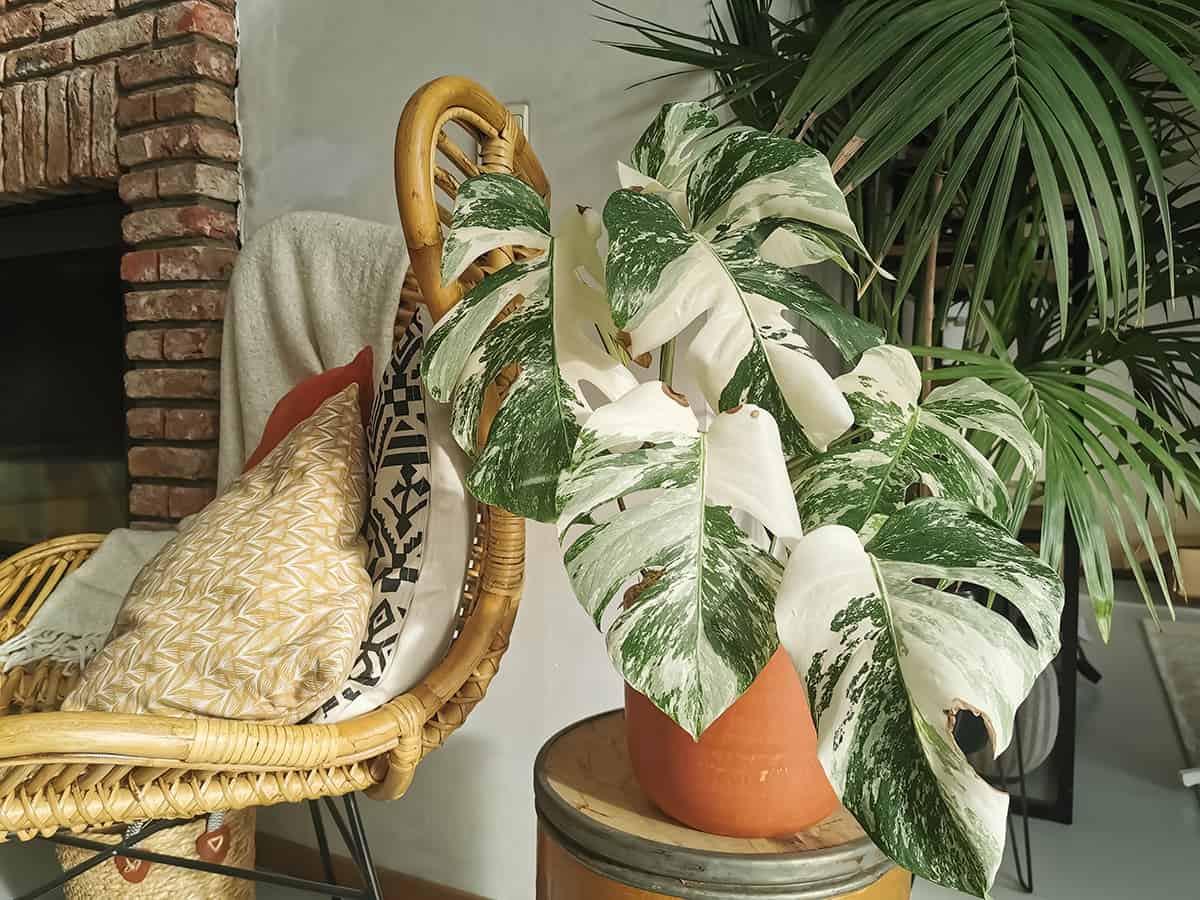
Monstera borsigiana is a cultivar that closely resembles Monstera deliciosa, with similar split leaves and growth habits. The Borsigiana variety can grow faster and has smaller internodes than the deliciosa, making it an excellent option for faster growth and more compact spaces.
